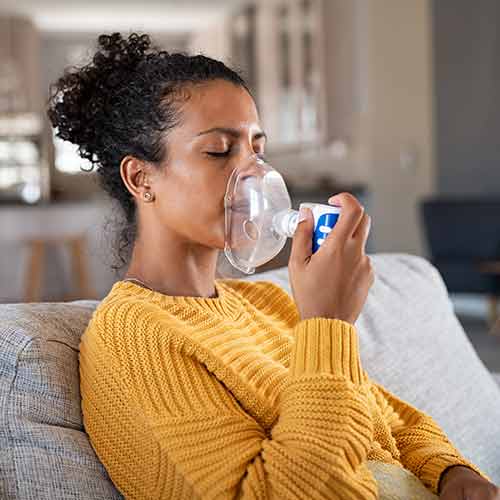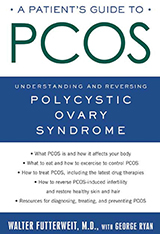



Hot Health Topic
Novel RSV Vaccines Aim to Fight Fall Spikes in Respiratory Illnesses
Health experts continue to express concerns about the return of a “tripledemic,” a term used to describe the convergence of the seasonal flu, COVID-19, and the respiratory syncytial virus (more commonly known as RSV). RSV is a common respiratory virus that usually causes cold-like symptoms. Although most people only experience mild illness when they contract RSV, there are some populations that remain at serious risk. For example, RSV continues to be the number one reason why babies are hospitalized every year (Suh et al., 2022) and leads to between 6,000-10,000 deaths of older people annually (CDC, 2023).
RSV tends to spread in the fall and winter, much like the flu and COVID-19. People infected with RSV typically show symptoms within 4 to 6 days after getting infected. RSV symptoms, much like a cold, include a runny nose, decreased appetite, coughing, sneezing, fever, and wheezing. When RSV makes its way down into the chest, however, it causes bronchiolitis or inflammation of the small airways in the lungs. Severe RSV can cause pneumonia or exacerbate existing conditions, such as asthma, chronic obstructive pulmonary disease, and congestive heart failure. Each year, this leads to 60,000 and 160,000 RSV hospitalizations in adults 65 and older (CDC, 2023).
Babies are especially susceptible to RSV because their immune systems and lungs are not fully developed. This results in the virus creating respiratory problems and may require them to need supplemental oxygen to help them breathe. In children younger than 5 years of age, there are approximately 2.1 million RSV related outpatient visits a year, 58,000 to 80,000 hospitalizations, and between 100 to 300 deaths (CDC, 2023; Hall et al., 2009)
There was a surge of total RSV cases in the fall and winter of 2022, especially among children, and hospitalization rates for older adults were 10 times higher than usual for that time of year (Wang et al., 2023).
If you or a family member is at risk for severe RSV, there are several preventative measures you can adopt. First, you can practice many of the same safety measures you use for avoiding the flu and COVID-19, such as handwashing, covering your mouth when coughing or sneezing and disinfecting surfaces that people frequently touch (e.g., doorknobs, electronics). Second, you can let older family members know about the new RSV vaccine and how it can protect them. There are also new RSV vaccines targeting pregnant women and young children.
The new RSV vaccines target the following populations:
- Older people: The FDA recommends that those ages 60 and older “may” get a single dose vaccine; a decision they should make through discussion with their health care provider. Notably, one dose of RSV vaccine provides protection against RSV disease in older adults for at least two winter seasons (CDC, 2023). The RSV vaccines for older adults are now available at your local pharmacy or health clinic.
- Infants and toddlers: The FDA approved two vaccine options for infants and toddlers. This includes a monoclonal antibody called nirsevimab designed for all infants up to 8 months old that are born during or entering their first RSV season. In addition, there is a second vaccine available for babies during their second RSV season who are between 8-19 months old and at high risk for severe disease. These RSV vaccines are available from your pediatrician and at some hospitals immediately post birth. Ask your doctor to learn more!
- Pregnant women: In September 2023, the CDC recommended an FDA-approved vaccine for pregnant women that provides them with antibodies to pass along to their fetus, which protects newborn babies from birth to 6 months of age from severe RSV. This new vaccine, Pfizer’s bivalent RSVpreF vaccine, has been shown to reduce the risk of RSV hospitalization for babies by 57% in the first six months after birth (CDC, 2023). The vaccine should be taken between 32 and 36 weeks of pregnancy. Ask your doctor to learn more!
Citations
Centers for Disease Control (CDC). (2023). RSV in Older Adults and Adults with Chronic Medical Condition.
Centers for Disease Control (CDC). (2023) CDC recommends new vaccine to help protect babies against severe respiratory syncytial virus (RSV) illness after birth.
Centers for Disease Control (CDC). (2023). RSV Surveillance & Research
Hall CB, Weinberg GA, Iwane MK, et al. (2009). The burden of respiratory syncytial virus infection in young children. New Engl J Med. 2009;360(6):588–98.
Suh, M., Movva, N., Jiang, X., Bylsma, L.C., Reichert, H., Fryzek, J.P., Nelson,C.B. (2022). Respiratory Syncytial Virus Is the Leading Cause of United States Infant Hospitalizations, 2009–2019: A Study of the National (Nationwide) Inpatient Sample. The Journal of Infectious Diseases, 226 (2) S154- S16
Wang L, Davis PB, Berger NA, Kaelber DC, Volkow ND, Xu R. Disrupted seasonality and association of COVID-19 with medically attended respiratory syncytial virus infections among young children in the US: January 2010-January 2023. medRxiv [Preprint]. 2023 May 16:2023.05.12.23289898.

Environmental Justice Corner
Is All This Extreme Weather Stressing You Out? You Are Not Alone.
Nearly every part of the United States has been touched by extreme weather events in the past few years. Ranging from hurricanes, floods, tornados, and fires to extreme heat, both the frequency and severity of these climate change-related events continues to rise. For most people, the mental health consequences of a disaster include mild stress and insomnia, unhealthy coping behaviors such as increased consumption of alcohol, and increased prevalence of mental health issues such depression, anxiety, and post-traumatic stress disorder (PTSD) (APA, 2017). Black and other communities of color are at even greater risk as they have higher rates of mental health conditions and are more likely to live in areas experiencing air pollution, heightened flood risks, elevated temperatures, and poor-quality housing, such as historically redlined areas (Berberian et al., 2022).
Decades of research highlight both the immediate and longer-term mental health challenges caused by extreme weather. Evidence shows that incidents of gender-based violence are often exacerbated by extreme weather, including through contributing factors like stress, social instability, and economic turbulence (Van Daalen et al., 2022). Rates of depression and PTSD are often heightened after disasters and have been well documented in the aftermath of fires, hurricanes, and floods (Schwartz et al., 2015; Mao et al., 2022; Silviera et al., 2021). Findings highlight how people displaced following hurricanes Harvey and Sandy, for example, were particularly vulnerable to adverse mental health outcomes, especially when displaced into temporary shelters (Taioli, 2018).
Even people who have not been directly affected by a climate disaster are experiencing feelings of climate anxiety. The American Psychological Association (APA) even coined a new term to describe this feeling: “eco-anxiety.” Eco-anxiety is defined as “a chronic fear of environmental doom” and can include overwhelming feelings of fear, sadness, and dread about climate change and its effects (APA, 2017). Research shows how an increasing number of Americans are experiencing these concerns. According to a 2020 APA survey, 56% of U.S. adults expressed that climate change is the most important issue facing the world today. This study also found that nearly half of young adults ages 18 to 34 said they felt stress over climate change in their daily lives (APA, 2020).
Although these issues can feel overwhelming, there are many steps you can take in your day to day to help cope with these anxieties.
- Volunteer in your community: This includes finding ways to take action within your community, such as finding a local group or project focused on fighting climate change or building community health resiliency during emergencies. For example, you could join your local Community Emergency Response Team or help with groups operating cooling centers for at-risk populations during extreme heat waves.
- Develop an Emergency Plan: It may also help to be prepared for a future emergency by developing a plan for you and your family ahead of time. This can include packing an emergency kit with essential supplies (visit the CDC’s resources on how to build an emergency kit to learn more), keeping nonperishable food items and water supplies within your home, or developing an evacuation plan in the event of a disaster.
- Talk to a Mental Health Professional: It may also be necessary to seek mental health support, especially in the aftermath of a disaster. Please remember, you are not in this alone, and there are many resources to help!
Citations
American Psychological Association (2017). Mental Health and our Changing Climate: Impacts, Implications and Guidance. APA.
American Psychological Association (2020). Majority of US Adults Believe Climate Change Is Most Important Issue Today. APA.
Berberian AG, Gonzalez DJX, Cushing LJ. Racial Disparities in Climate Change-Related Health Effects in the United States. Curr Environ Health Rep. 2022 Sep;9(3):451-464.
Mao W, Eboreime E, Shalaby R, Nkire N, Agyapong B, Pazderka H, Obuobi-Donkor G, Adu M, Owusu E, Oluwasina F, Zhang Y, Agyapong VIO. One Year after the Flood: Prevalence and Correlates of Post-Traumatic Stress Disorder among Residents in Fort McMurray. Behav Sci (Basel). 2022 Mar 2;12(3):69.
Schwartz RM, Sison C, Kerath SM, Murphy L, Breil T, Sikavi D, Taioli E. The impact of Hurricane Sandy on the mental health of New York area residents. Am J Disaster Med. 2015;10(4):339-46
Silveira S, Kornbluh M, Withers MC, Grennan G, Ramanathan V, Mishra J.Chronic Mental Health Sequelae of Climate Change Extremes: A Case Study of the Deadliest Californian Wildfire. Int J Environ Res Public Health. 2021 Feb 4;18(4):1487.
Taioli E, Tuminello S, Lieberman-Cribbin W, Bevilacqua K, Schneider S, Guzman M, Kerath S, Schwartz RM. Mental health challenges and experiences in displaced populations following Hurricane Sandy and Hurricane Harvey: the need for more comprehensive interventions in temporary shelters. J Epidemiol Community Health. 2018 Oct;72(10):867-870.
Van Daalen, K.B., Kallesoe, S.S., Davey, F., Dada, D., Jung, L., Singh, MD. Issa, R., Emilian, C.A., Kuhn, I., Keygnaert, I., Nilsson, M. (2022) Extreme events and gender-based violence: a mixed-methods systematic review. The Lancet Planetary Health. 6:6. E504-E523.

Nutrition Corner
Sweet Potato Casserole
Try out this easy, delicious dish just in time for the holiday season.
Ingredients
- 2 tablespoons 1% low-fat milk
- 1½ teaspoons brown sugar
- 1 teaspoon ground cinnamon
- ¼ cup quick cooking oats, dry
- 1 can (about 15 ounces) low-sodium sweet potatoes, drained and chopped
Directions
- Preheat oven to 350 degrees F.
- In a small bowl, combine milk, brown sugar, cinnamon, and oatmeal. Mix well and set aside.
- In a medium-size baking pan, add the sweet potatoes so that they cover the bottom of the pan.
- Add the oatmeal mixture on top of the sweet potatoes.
- Bake for 20 minutes. Serve hot or refrigerate and serve cold.
Nutrition Facts
- Serving Size ¼ cup (80g)
- Calories 94
- Total fat 0.5g
- Saturated fat 0g
- Cholesterol 0mg
- Sodium 30mg
- Carbohydrate 21g
- Dietary Fiber 3g
- Sugars 5g
- Protein 2g
- Vitamin A 130% DV
- Vitamin C 13% DV
- Calcium 2% DV
- Iron 5% DV
Percent Daily Values are based on a 2,000 calorie diet
Source: A Harvest of Recipes with USDA Foods

The Reading Nook
Fall 2023 Featured Book Selection
One in 10 American women of childbearing age is affected by polycystic ovary syndrome (PCOS) to some degree, and many suffer from serious symptoms, such as infertility, early miscarriage, chronic pelvic pain, weight gain, high blood pressure, acne, and abnormal hair growth. PCOS is by far the most common hormone imbalance in women of this age group, yet few women understand the threat it poses to their health―or how to prevent it.
In A Patient's Guide to PCOS, Dr. Walter Futterweit, a foremost authority on PCOS in America, tells women everything they need to know about this condition and how to treat it. Drawing on his 25 years researching and treating the condition and his ongoing long-term study of more than a thousand women with PCOS, Futterweit discusses:
- What PCOS is and how it affects your body.
- What to eat and how to exercise to control PCOS.
- All the treatment options, including the latest drug therapies.
- How to reverse PCOS-induced infertility and restore healthy skin and hair.
- Resources for preventing, diagnosing, and treating PCOS.
This comprehensive guide contains everything women need to know about PCOS―from identifying warning signs and seeking a diagnosis to finding emotional support in recovery―to regain their health and resume their lives.
Source: Contemporary OB/GYN
For more information about PCOS, please register for our January webinar, which will be held on Thursday, January 11, 2024, at 6:30 p.m.

A Patient's Guide to PCOS: Understanding--and Reversing--Polycystic Ovary Syndrome
Author: Walter Futterweit M.D. and George Ryan
Summary: The Mind-Gut Connection describes:
- What PCOS is and how it affects your body.
- What to eat and how to exercise to control PCOS.
- All the treatment options, including the latest drug therapies.
- How to reverse PCOS-induced infertility and restore healthy skin and hair.
- Resources for preventing, diagnosing, and treating PCOS.

Recenter, Refocus, Recharge
Benefits of Mindfulness - Taking Charge of Your Mental Health
Breathing Exercises: The Road to Relaxation
As the holiday season quickly approaches, stress and anxiety are often more prevalent due to the various activities and traditions surrounding the season. This condition includes pressures related to social gatherings, family obligations, and financial expectations.
Evidence suggests that anxiety disorders are on the rise, with 32% of US adults reporting symptoms of anxiety or depression in the past two weeks (CDC, 2022). Experiences of anxiety can be detrimental to a person’s quality of life, which affects their emotional responses to situations and increases their stress levels when left untreated. Many people try to suppress negative emotions or overlook their own personal needs because of the demands of the holiday season. Even with limited time alone, it is important to listen to your body. One way to quickly calm down and be centered is through using breathing exercises.
Elevated levels of stress hormones trigger the body’s “flight or fight” response, increasing heart and breathing rates in the process. Long-term stress may affect your body’s ability to relax and function normally and increase negative health outcomes, such as chronic stress and anxiety disorders. Signs of chronic stress may include muscle tension, metabolic dysfunction, immune dysregulation, and inflammation.
Through regulated breathing techniques, the body is able slow down and effectively communicate with other organs. Depending on the breathing technique an individual is practicing, the health benefits may differ. For example, paced breathing techniques were found to improve hot flashes in almost 400 individuals, while diaphragmic breathing improved muscle relaxation and mental health in individuals who suffer with irritable bowel syndrome. Below are four breathing techniques that can quickly destress and relax an individual dealing with anxiety:
- Belly or Diaphragmatic Breathing
- Using the diaphragm, this option offers slow, deep breathing.
- Get into a comfortable position, either sitting or lying down, and close your eyes.
- Place one hand on your chest and the other your abdomen. (This helps indicate which half of your body should be moving. The hand on the abdomen should be moving, rather than the hand on your chest).
- Inhale through your nose for 4 seconds, feeling your abdomen expand.
- Hold your breath for 2 seconds.
- Slowly exhale through your mouth for 6 seconds (Your mouth should be relaxed).
- Repeat for 5-15 minutes.
- Using the diaphragm, this option offers slow, deep breathing.
- Coherent Breathing
- This breathing exercise focuses on soft, natural breathing.
- Find a comfortable position, either sitting or lying down.
- Inhale for 3 seconds through your nose.
- Slowly exhale through your mouth for 3 seconds.
- This breathing exercise focuses on soft, natural breathing.
- 4-7-8 Breathing
- This method, utilized by military personnel, is aimed to reduce anxiety and promote better sleep quality.
- Get into a comfortable seated position. Relax your face and body muscles by dropping your shoulders and loosening your hands and fingers.
- Breathe in through your nose for 4 seconds.
- Hold for 7 seconds.
- Slowly inhale through your mouth for 8 seconds.
- This method, utilized by military personnel, is aimed to reduce anxiety and promote better sleep quality.
- Box or Square Breathing
- This technique helps to calm and regulate the nervous system and heart rate. Its called boxes/square breathing because of its equal and continuous breath control timing technique.
- Get into a comfortable sitting or lying position.
- Inhale slowly for 4 second through the nose.
- Hold for 4 seconds.
- Slowly exhale for 4 seconds through the mouth.
- Hold for 4 seconds.
- Repeat for 5-10 minutes.
- If 4 seconds is uncomfortable, you may shorten your berthing time (use 2 or 3 seconds).
- This technique helps to calm and regulate the nervous system and heart rate. Its called boxes/square breathing because of its equal and continuous breath control timing technique.
For a real-time mindfulness exercise, visit our Strive to Thrive video with Karen Sheffield-Abdullah Ph.D., RN, CNM, Mindfulness Matters of the Heart.
Citations
Center for Disease Control (2022). Reduce Stress in 10 Minutes and Improve Your Well-Being. Centers for Disease Control. CDC.
herpak CE (2019). Mindful Eating: A Review of How the Stress-Digestion-Mindfulness Triad May Modulate and Improve Gastrointestinal and Digestive Function. Integrative Medicine. 2019; 18(4), 48–53.
Laird KT, Tanner-Smith EE, Russell AC, Hollon SD, Walker, LS. Comparative Efficacy of Psychological Therapies for Improving Mental Health and Daily Functioning in Irritable Bowel Syndrome: A Systematic Review and Meta-analysis. Clinical Psychology Review. 2017; 51, 142–152.
Maleki A, Ravanbakhsh M, Saadat M, Bargard MS, Latifi SM. (2022). Effect of Breathing Exercises on Respiratory Indices and Anxiety Level in Individuals with Generalized Anxiety Disorder: A Randomized Double-blind Clinical Trial. Journal of Physical Therapy Science. 2017; 34(4), 247–251.
National Center of Complementary and Integrative Health Sciences. (2022). Press Reset on Stress. NICCIH.
Sood R, Sood A, Wolf SL, Linquist BM, Liu H, Sloan JA, Satele DV, Loprinzi CL, & Barton DL. Paced Breathing Compared with Usual Breathing for Hot Flashes. Menopause (New York, N.Y.). 2013; 20(2), 179–184.
Zaccaro A, Piarulli A, Laurino M, Garbella E, Menicucci D, Neri B, Gemignani A. How Breath-control Can Change Your Life: A Systematic Review on Psycho-physiological Correlates of Slow Breathing. Frontiers in Human Neuroscience. 2018. 12, 353.

Multimedia Showcase
Climate Change and Health: Solutions for Your Community
Climate Change and Health: Solutions for Your Community
- Women’s Community Resiliency, Environment Action, and Collaborations for Health (REACH) Equity Study
- Citizen Science Project
The National Institute of Environmental Health Sciences (NIEHS) is looking for fresh ideas from students on how to address climate change issues in their own communities!
The Challenge: Students will address an example of climate change and a related impact on human health by developing a community-driven solution based on scientific inquiry. Teacher-led student groups will submit a detailed proposal outlining the problem they see in their community and a proposed, science-based solution.
Competition Prize: The top three proposals will receive $500 each to implement their proposed projects. Students will present their completed projects in a poster at the 2024 NIEHS Women’s Health Awareness Conference on Saturday, April 13, 2024.
November 22, 2023 – Interest Form Due Date
Interested? Let us know by completing the form
December 17, 2023 – Proposal Due Date
See information on proposals and examples of project posters.
Sponsors: This challenge is supported by the NIEHS Women’s Health Awareness Program, Office of Human Research and Community Engagement, and the NIEHS Worker Training Program.

Sister to Sister: Share Your Story
Share Your Story for Our 10th Anniversary
The 10th anniversary of the Women’s Health Awareness conference is approaching. As we celebrate this special milestone, we would love to hear and share your experiences and stories of how WHA has positively impacted your life! Sharing a story about your personal WHA experiences can provide encouragement and support to others.
Make a difference in the life of another sister by sharing your WHA experience and story. Send us your testimonials. Tell us about screenings that helped you identify any health issues. Share your thoughts on what WHA means to you and to the community or share a congratulatory message to WHA from yourself or a group of Sista’s! Flash back over the years of WHA and share your stories, pictures, or video clips. Entries will be shared in the WHA over the years segment for the 2024 conference as well as in future WHA newsletters. Submit your story by December 1 and you will be entered into a raffle drawing.
Email WHA or call 919-541-3852 if you have any questions.

Let's Stay in Touch












